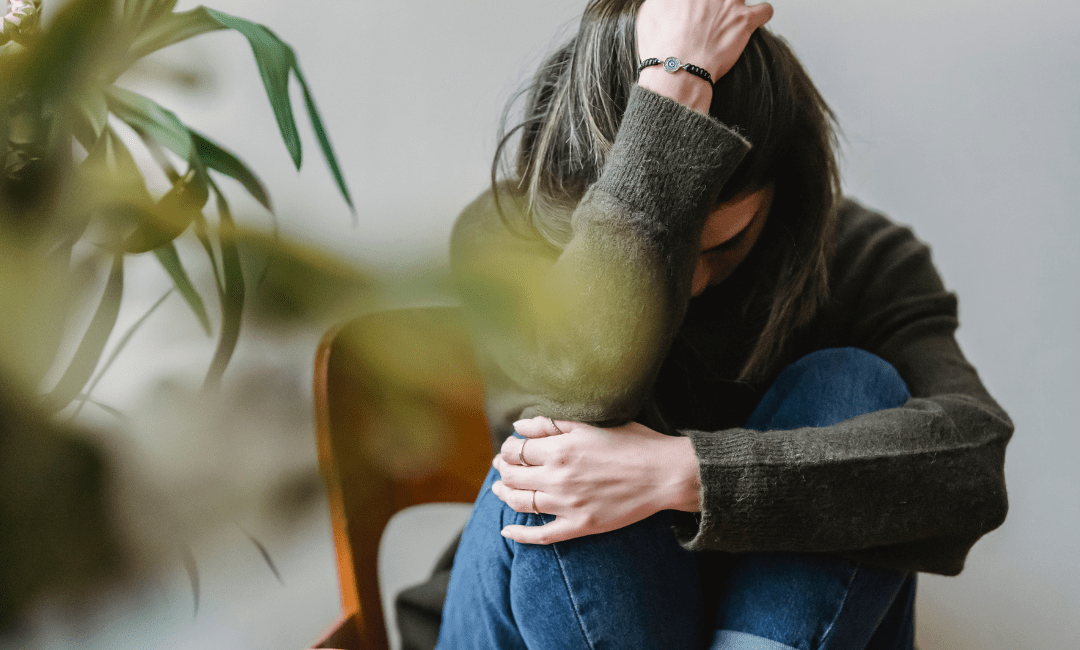Have you ever been sailing along, feeling calm and collected, and then suddenly a wave of anxiety washes over you?
This experience is incredibly common. In fact, many people describe anxiety as coming in waves as intense surges of worry, fear, or discomfort that ebb and flow throughout the day.
Does anxiety come in waves?
Absolutely! And understanding this pattern is the first step to managing it effectively.
Why Do I Get Random Waves of Anxiety?
There isn’t always a clear reason why anxiety hits in waves. Sometimes, a trigger might be obvious as an upcoming deadline, a social event, or even a cup of strong coffee. But other times, these waves can feel completely random, leaving you feeling confused and frustrated.
The truth is, our brains are wired for survival.
When they perceive even a slight threat, they release a surge of stress hormones like adrenaline. This “fight-or-flight” response can manifest as physical symptoms (increased heart rate, sweating) and intense emotions (worry, fear).
These physical and emotional changes are what we experience as a wave of anxiety.
Does anxiety come in waves even when there’s no apparent threat? Yes! Even subtle stressors, like unfinished tasks on your to-do list, a cluttered environment, or a lack of sleep, can trigger the fight-or-flight response.
Additionally, underlying anxieties about finances, relationships, or health can bubble up unexpectedly, causing you to feel anxious out of the blue.
How Long Do Anxiety Waves Last?
While anxiety waves can feel overwhelming and all-consuming, the good news is they are temporary. Unlike a tidal wave that reshapes the coastline, these surges of anxious energy typically peak within a few minutes and then gradually subside over the course of 15-30 minutes.
However, the perceived duration of an anxiety wave can be a different story altogether. Does anxiety come in waves that feel like they last for hours?
Absolutely!
This is because our reactions to the anxiety itself can significantly influence how long it seems to drag on.
Here’s why:
- Fighting the Flow: When anxiety hits, our natural instinct might be to fight against it. We might try to push away the anxious thoughts, control our physical symptoms, or convince ourselves everything is fine. However, this resistance can backfire. Imagine trying to hold back a wave with your bare hands as it’s exhausting and ultimately futile. The same principle applies to anxiety. By fighting the wave, we keep it at the forefront of our minds, prolonging the feeling of being stuck.
- Self-Judgment: Sometimes, anxiety can be accompanied by feelings of shame or judgment. We might blame ourselves for feeling anxious or worry that something is wrong with us. This negative self-talk only adds fuel to the fire, intensifying the anxiety and making it feel like it’s taking longer to dissipate.
- Rumination: Anxiety often leads to a cycle of repetitive negative thinking, also known as rumination. We might replay the situation that triggered the anxiety, catastrophize about potential consequences, or dwell on the physical sensations we’re experiencing. This mental churning keeps us fixated on the anxiety, making the minutes tick by like hours.
The Key: Acceptance and Distraction
The important takeaway here is that while the actual physiological effects of an anxiety wave might subside within 15-30 minutes, how long it feels like it lasts depends on our internal response.
By accepting the anxiety as a temporary wave and gently guiding our attention elsewhere, we can significantly shorten the perceived duration and prevent ourselves from getting caught in the riptide.
Can Anxiety Just Come and Go?
Does anxiety come in waves that appear and disappear for no reason? It can definitely feel that way sometimes. But there are often underlying factors contributing to these seemingly random fluctuations.
Here are some things that can cause anxiety to come and go:
- Fluctuating Stress Levels: Daily stressors can ebb and flow, leading to corresponding changes in anxiety levels.
- Underlying Medical Conditions: Certain medical conditions, such as thyroid problems or hormonal imbalances, can contribute to anxiety symptoms.
- Lifestyle Habits: Sleep deprivation, lack of exercise, and poor diet can all worsen anxiety.
- Exposure to Triggers: You might encounter various triggers throughout the day, leading to temporary spikes in anxiety.
What is the 3 3 3 Rule for Anxiety?
When an anxiety wave crashes over you, it can be easy to get swept away in a current of worry and fear. But there’s a simple, yet powerful, technique you can use to regain your footing and navigate the wave with more ease: the 3 3 3 rule.
This grounding technique works by gently shifting your focus away from your internal world of anxious thoughts and feelings and back to the present moment through your senses and body.
Here’s a breakdown of each step:
1. Look Around You and Identify Three Things You Can See:
Take a mindful moment to observe your surroundings. Don’t just glance around as actively search for three distinct visual details.
Focus on the specifics: Is it the vibrant red of a passing car, the intricate pattern of a spiderweb, or the way sunlight filters through the leaves of a tree?
By engaging your sense of sight with intention, you break the cycle of rumination and bring your attention to the objective world around you.
2. Listen for Three Sounds You Can Hear:
Once you’ve identified your three visual anchors, close your eyes (if it’s safe to do so) or soften your gaze, and tune into your sense of hearing.
Pay attention to the subtle sounds in your environment that you might normally filter out. Is it the steady hum of the refrigerator, the distant laughter of children playing outside, or the rhythmic tapping of your fingers on a keyboard?
Focusing on these auditory details grounds you in the present moment and provides a sense of calm amidst the anxious storm.
3. Move Three Different Body Parts:
Finally, reconnect with your physical body by moving three different parts. This simple act of physical awareness can be incredibly grounding.
Wiggle your toes, stretch your fingers, roll your shoulders, or take a few deep breaths.
The movement doesn’t need to be grand as even subtle shifts can be enough to disrupt the anxious energy and bring your attention back to the present.
Why Does the 3 3 3 Rule Work?
The 3 3 3 rule is effective for several reasons. First, it provides a concrete action to take in the face of anxiety, shifting you from a passive state of worry to an active state of engagement.
Second, by focusing on sights, sounds, and physical sensations, it interrupts the cycle of negative thoughts that can fuel anxiety.
Finally, it promotes mindfulness, a practice known to reduce stress and improve emotional regulation.
The 3 3 3 rule is not a magic bullet, but it’s a powerful tool you can use to manage anxiety in the moment.
The next time you feel an anxiety wave rising, try this simple technique. By engaging your senses and grounding yourself in the present, you can ride out the wave with more control and clarity.
Conclusion
Does anxiety come in waves? Absolutely!
But remember, you’re not alone in this. Anxiety is a normal human experience, and these waves, while uncomfortable, are temporary.
By understanding the nature of anxiety and learning techniques like the 3 3 3 rule, you can develop the tools to manage these waves effectively and live a calmer, more fulfilling life.
Contact us to schedule an appointment with a professional in New York or New Jersey.

